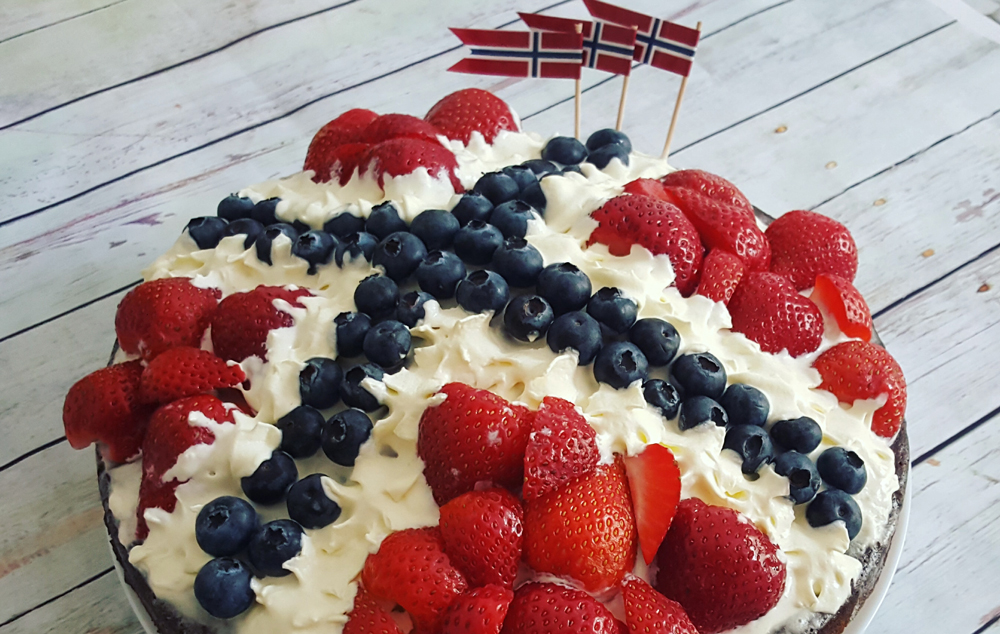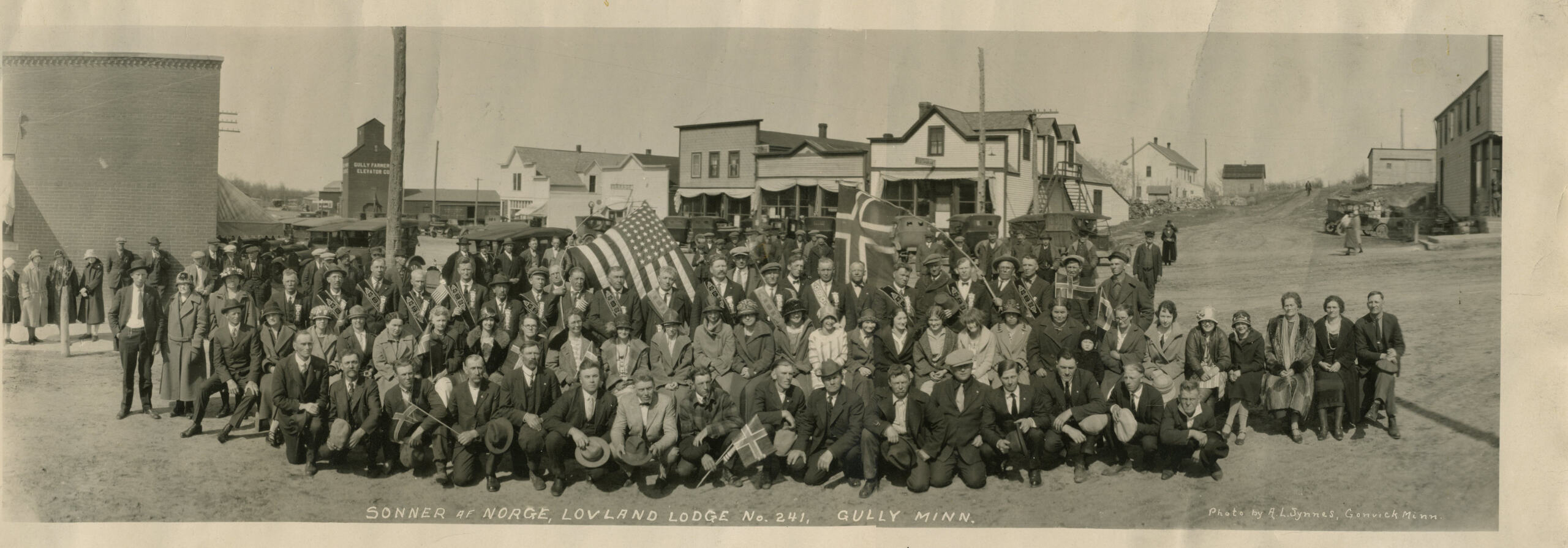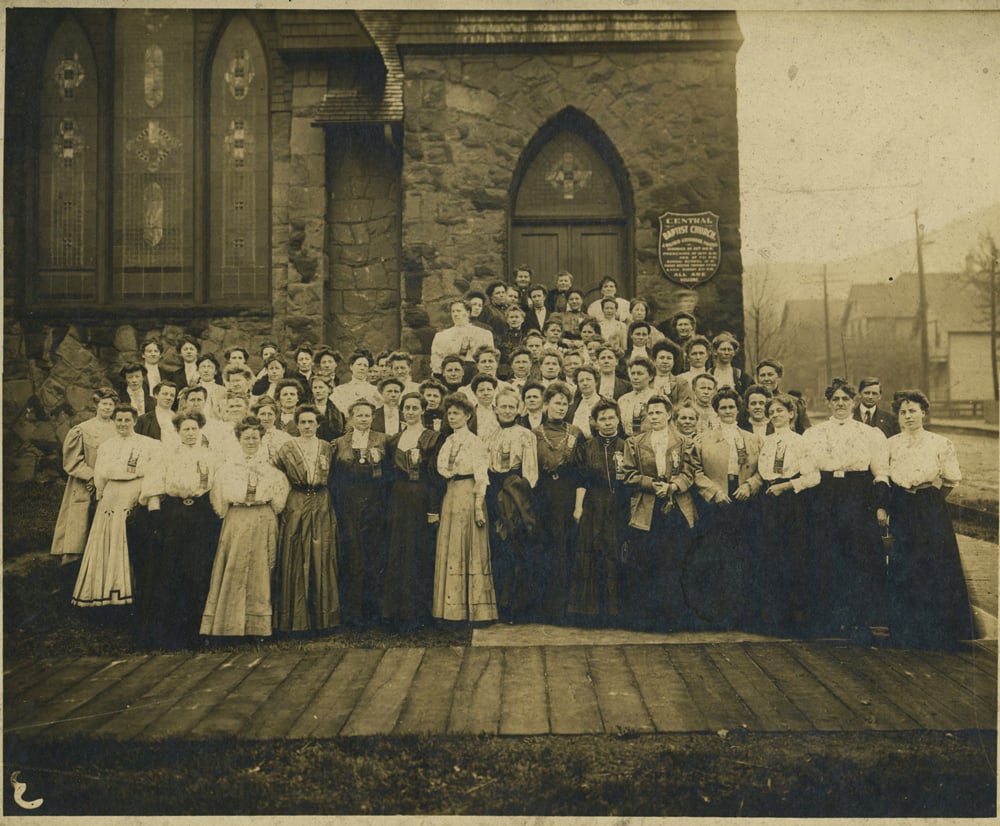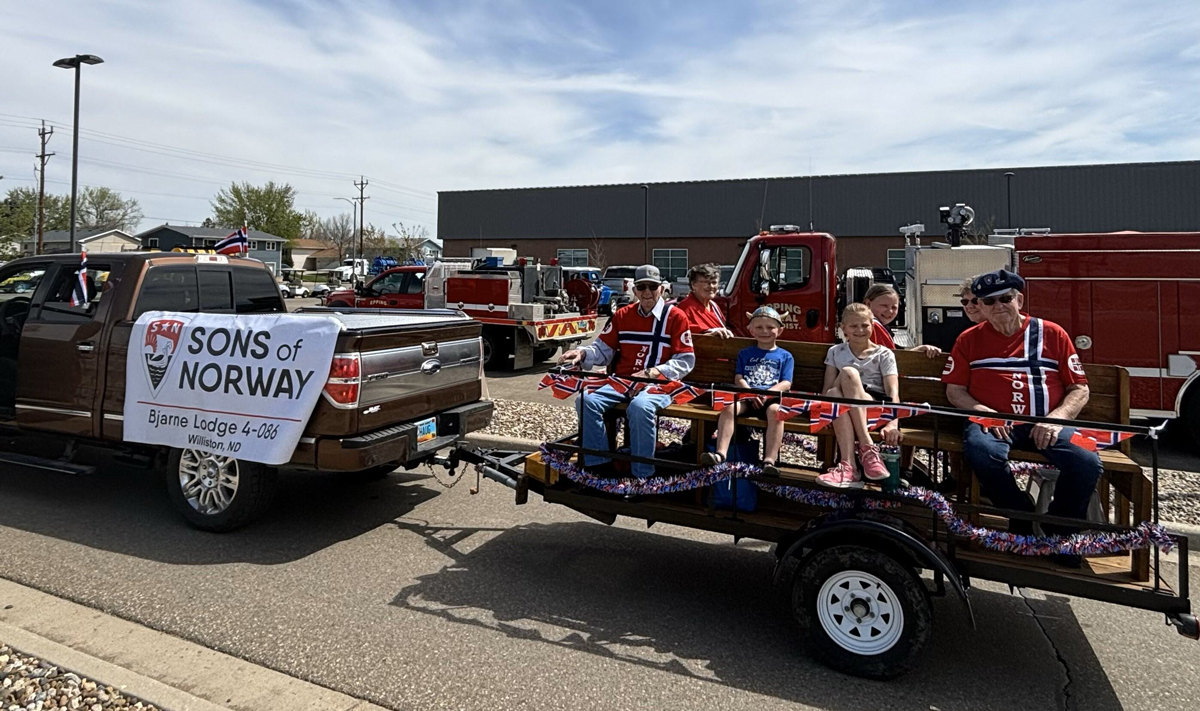
Literal layer:
When Sons of Norway was formed in 1895, men of Norwegian background ages 20 to 50 who were employed could join and purchase a life insurance policy. During the late 19th and early 20th century, fraternal orders popped across the U.S. as social and economic support for specific groups of people, bonded by their profession, heritage, or religion. Most of these groups had either all male or all female membership.

Sons of Norway Lovland Lodge #241, Gully, MN
Historical layer:

Daughters of Norway – Duluth, MN
In 1897, Norwegian emigrant women in Minneapolis formed their own social and cultural group, Daughters of Norway of the Midwest. Made up of single women who had come to the US to work, membership in Daughters of Norway provided a death a benefit and sick pay, as well as a social network for Norwegian women.
The lodges of these two organizations held some events together but existed separately for decades. As of 1916, women could be admitted as members of Sons of Norway, but it wasn’t until 1950 that Daughters of Norway of the Midwest and Sons of Norway decided to merge. A separate chapter, Daughters of Norway of the Pacific Coast, founded in 1908, assumed the name Daughters of Norway in 1956 and to this day continues as a social and cultural organization.
In the 75 years since the merger of Sons of Norway and Daughters of Norway of the Midwest, there have been many proposals to change the name. Each time, members have elected to maintain tradition.
Societal layer:
In the late 19th century, Norway was basking in the glow of a National Romantic movement in which Norwegian poetry, art, literature and music blossomed, affirming Norwegians as having their own culture which was decidedly not-Swedish. If you’ve ever wondered why there seemed to be such a rift between these two cultures in North America (even in jest), it was because Norway had been subordinate to the dominant Swedish culture for 91 years and were just coming into their own identity at the time when many decided to emigrate to North America.
Cultural layer:
1820 – the patriotic song Sønner af Norge (“Sons of Norway”) was penned by poet Henrik Anker Bjerregaard, winning a national anthem contest. This song served as the unofficial Norwegian national anthem through 1864, when it was eclipsed by Ja, Vi Elsker.
Here is the text of Sønner af Norge / Sons of Norway:
Sons of Norway, the ancient kingdom,
sing to the harps the festive sounds!
Manly and full of solemnity let the music rise,
Our song consecrates the ancestral land.
Memories of ancestors gloriously return,
each time we mention our ancestral roots.
Hearts swell with pride and glowing cheeks,
hail the beloved, the sacred name!
1859 – Ja, Vi Elsker Dette Landet is a patriotic song written by Bjørnstjerne Bjørnson. In 1863-64, Bjørnson’s cousin Rikard Nordraak set the poem to music and it was first performed on May 17, 1864.
The conductor of the choir noted that the song was immediately beloved. Right on the cusp of Norway becoming independent from Sweden, the spirit of the Norwegian people was captured.
Both of these patriotic songs were enjoyed in Norway for over a century, but it wasn’t until December 2019 that “Ja, Vi Elsker” was officially voted Norway’s national anthem by the Storting, after having been in use for over 150 years!
1895 – When Sons of Norway was formed in the US, Norway was still under Swedish control. But the mid-century national romantic period gave way to a bubbling movement to separate from Sweden. It is in this spirit that Sons of Norway’s founders grew up, when Norway was discovering and leaning into its own identity.
Both of these national anthems would have been well-known and sung by Sons of Norway’s founders, and both were so important to their Norwegian identities, that each song got a nod in the founding of the organization.
It’s hard to fathom, but the name of Sons of Norway was originally Bjørnstjerne Bjørnson, for about a week. This is a bit like naming a club after Mark Twain or Emily Dickinson. Bjørnson is considered one of Norway’s great authors, and and he won a Nobel Prize in Literature in 1903 for his poetry.
Luckily for modern spellcheck, the founders decided after only a week that Americans would have a hard time spelling and pronouncing the name, and pivoted to another anthem-related name that has stuck for 130 years: Sons of Norway.

